Gathering around a campfire is a timeless tradition that brings people together, offering warmth, camaraderie, and a natural setting for storytelling and games. Whether you’re with family, friends, or fellow adventurers, campfire games add a layer of fun and interaction that can turn a simple camping trip into a memorable experience. In this article, we’ll explore the magic of campfire games, delving into why they’re an essential part of outdoor gatherings, the variety of games suitable for different group sizes, and how they foster connection and enjoyment.

Why Games Are Good for Campfires
Building Connection
Campfire games are more than just entertainment; they are a means to foster connection, teamwork, and understanding among participants. They break the ice, encourage communication, and create shared memories that last long after the embers have cooled.
Enhancing Enjoyment
Games add excitement and laughter to the campfire setting. They provide challenges, spark creativity, and offer a playful way to engage with others. From guessing games to physical challenges, there’s something to suit every mood and preference.
Educational Value
Many campfire games have an educational aspect, whether it’s learning about nature, enhancing memory skills, or developing strategic thinking. They offer a fun and interactive way to learn new things and challenge the mind.
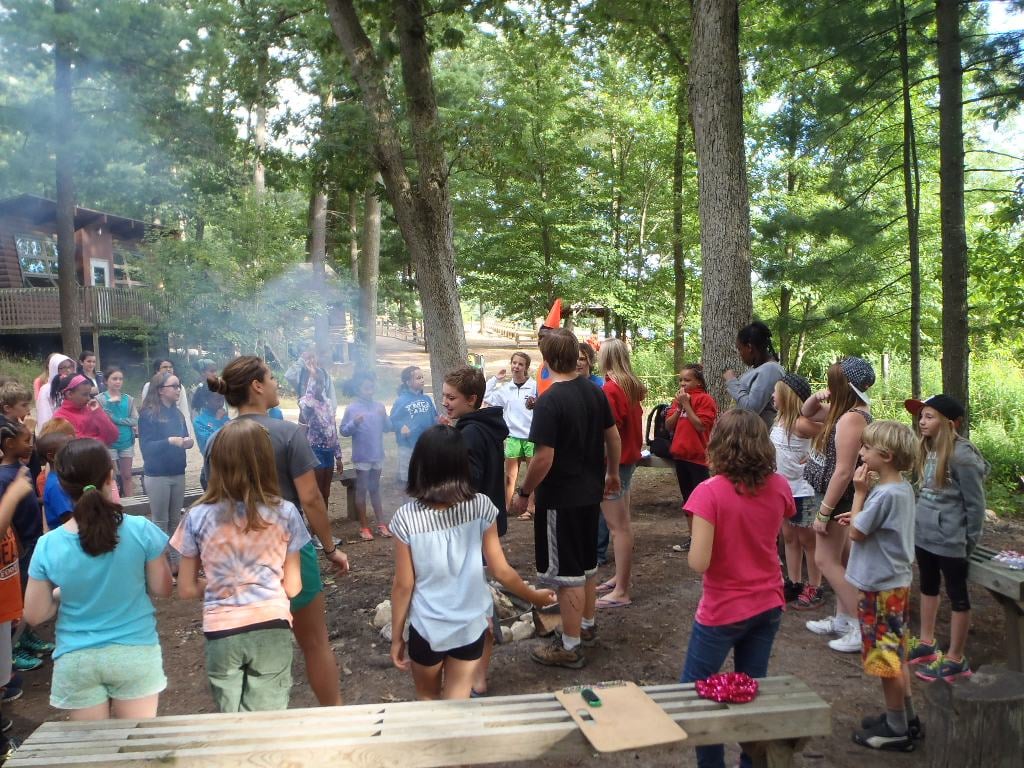
Safety Precautions for Campfire Games
Playing games around a campfire can be a delightful and memorable experience, but it also requires careful consideration of safety. The combination of fire, outdoor elements, and physical activity can pose risks if not managed properly. Here’s a guide to the essential safety precautions that should be taken during campfire games:
1. Fire Safety
- Maintain a Safe Distance: Ensure that games are played at a safe distance from the fire to prevent accidental falls or contact.
- Use a Fire Ring or Pit: Contain the fire within a designated fire ring or pit to minimize the risk of it spreading.
- Keep Firefighting Tools Nearby: Have water, a fire extinguisher, or sand readily available to quickly put out any unexpected flare-ups.
- Supervise Children: Always supervise children around the fire, and make sure they understand the rules for safe behavior.
2. Game Selection and Rules
- Choose Appropriate Games: Select games that are suitable for the space, age group, and physical abilities of the participants.
- Set Clear Rules: Explain the rules clearly to all participants, emphasizing any safety guidelines specific to the game or environment.
- Avoid Physical Contact Near the Fire: If playing physical or contact games, ensure they are conducted away from the fire to prevent accidental falls or injuries.
3. Environmental Awareness
- Check the Surroundings: Be aware of the terrain and any potential hazards like rocks, branches, or uneven ground that could cause tripping or injury.
- Use Proper Lighting: If playing after dark, ensure there is adequate lighting to see clearly without posing a risk to players or the environment.
- Respect Wildlife: Be mindful of the local wildlife and take precautions not to disturb or endanger them during your activities.
4. Equipment and Attire
- Use Safe Equipment: If games require equipment, make sure it is in good condition and suitable for outdoor use.
- Wear Appropriate Clothing: Encourage participants to wear closed-toe shoes and clothing that is suitable for outdoor play and won’t easily catch fire.
5. First Aid and Emergency Preparedness
- Have a First Aid Kit: Keep a well-stocked first aid kit on hand to treat minor injuries quickly.
- Know Emergency Procedures: Ensure that at least one person present knows basic first aid and the location of the nearest medical facility.
6. Alcohol and Substance Awareness
- Monitor Alcohol Consumption: If alcohol is present, monitor consumption, especially if games involve physical activity or coordination, to prevent accidents or impaired judgment.
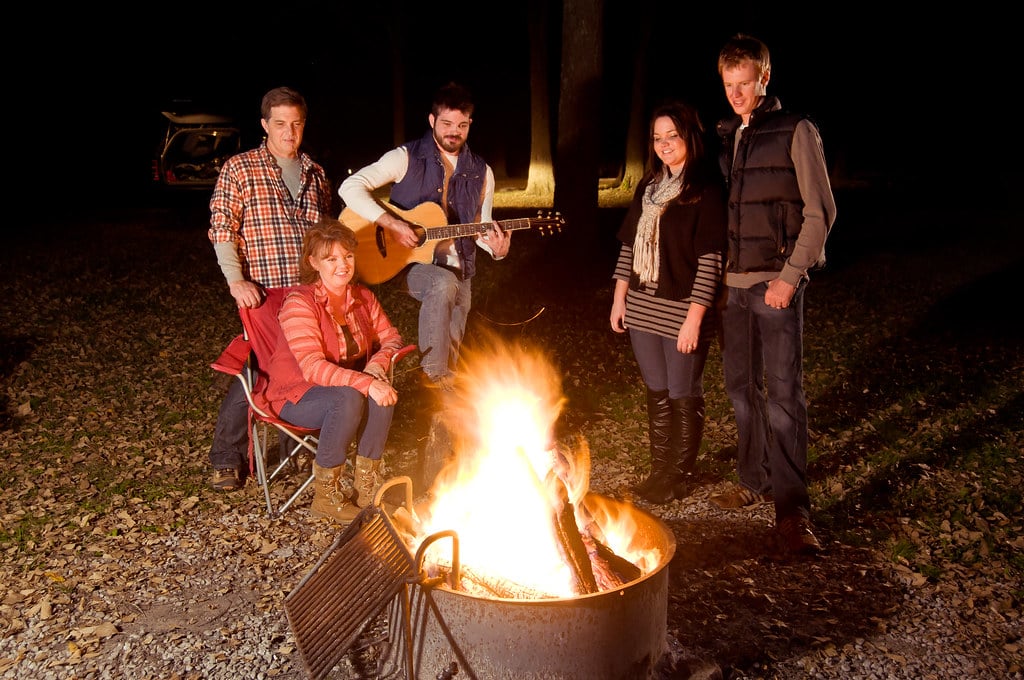
Campfire Games
Werewolf
Werewolf is a captivating game of deception, deduction, and strategy that can be enjoyed around the campfire. It’s a game that engages all players and can lead to unexpected twists and turns. Here’s how to play:
Objective In the imaginary village setting, there are two main groups: the innocent villagers and the deceptive werewolves. The villagers’ goal is to identify and eliminate all the werewolves, while the werewolves aim to outnumber the villagers.
Setup
- Choose a Moderator: First, you will need a neutral moderator to oversee the game. The moderator will be responsible for guiding the gameplay, announcing day and night phases, and revealing eliminated players.
- Assign Roles: Depending on the number of players, you’ll assign roles for villagers, werewolves, and possibly some special characters like the Seer or Doctor. You can write the roles on pieces of paper and have players draw them or use a Werewolf game app.
- Roles Explained:
- Villagers: Ordinary players who try to figure out who the werewolves are.
- Werewolves: Their goal is to deceive the villagers and eliminate them without being caught.
- Seer (Optional): Has the ability to “see” if a player is a werewolf or a villager during the night phase.
- Doctor (Optional): Can choose to “save” a player during the night phase, preventing their elimination.
Gameplay The game alternates between night and day phases.
- Night Phase:
- Everyone closes their eyes.
- The moderator asks the werewolves to open their eyes and silently choose a villager to eliminate.
- Optional roles like the Seer and Doctor then take their actions.
- The werewolves close their eyes again, and everyone wakes up.
- Day Phase:
- The moderator announces who was eliminated during the night.
- The remaining players (including the werewolves) discuss and vote on whom they suspect is a werewolf. The player with the most votes is eliminated.
- The next night phase begins, and the cycle continues.
Winning the Game The game continues until either:
- All the werewolves have been eliminated (villagers win), or
- The werewolves equal or outnumber the remaining villagers (werewolves win).
A campfire is a social hub, a place of gathering, storytelling, and bonding. With the right activities, safety measures, and consideration for the environment, it becomes a memorable part of the camping adventure.

Charades
Charades is a timeless and engaging game where players act out words or phrases without speaking, while others try to guess what they are. It’s a game that can be enjoyed around the campfire, fostering creativity and teamwork. Here’s how to play:
Objective The objective is to guess the word or phrase being acted out within a time limit.
Setup
- Divide into Teams: Players are divided into two or more teams.
- Prepare the Words/Phrases: Write down words or phrases on slips of paper and place them in a container. These can be related to a theme or chosen at random.
Gameplay
- Choose the Word/Phrase: One player from a team selects a slip of paper and reads the word or phrase without showing it to others.
- Act it Out: The player uses gestures, motions, and acting to convey the word or phrase, without speaking or using sounds.
- Guess the Word/Phrase: The player’s team attempts to guess the word or phrase within a set time limit, such as two minutes.
- Take Turns: Teams take turns acting and guessing, and the game continues for a set number of rounds or until all words/phrases have been used.
Scoring
- Award Points: Points can be awarded for correct guesses, and the team with the most points at the end of the game wins.
- Penalties: Optionally, penalties can be given for breaking the rules, such as speaking during the acting phase.
Winning the Game
- Declare the Winner: The team with the most points at the end of the game is declared the winner.
Charades encourages creativity, teamwork, and non-verbal communication. It’s a lively and entertaining game suitable for players of all ages and can be adapted to various themes and difficulty levels. Whether you’re miming a famous movie title, an animal, or a challenging abstract concept, Charades is a game that brings joy, laughter, and connection to any campfire gathering. It’s a game that transcends words, turning simple gestures into a language of fun and entertainment.
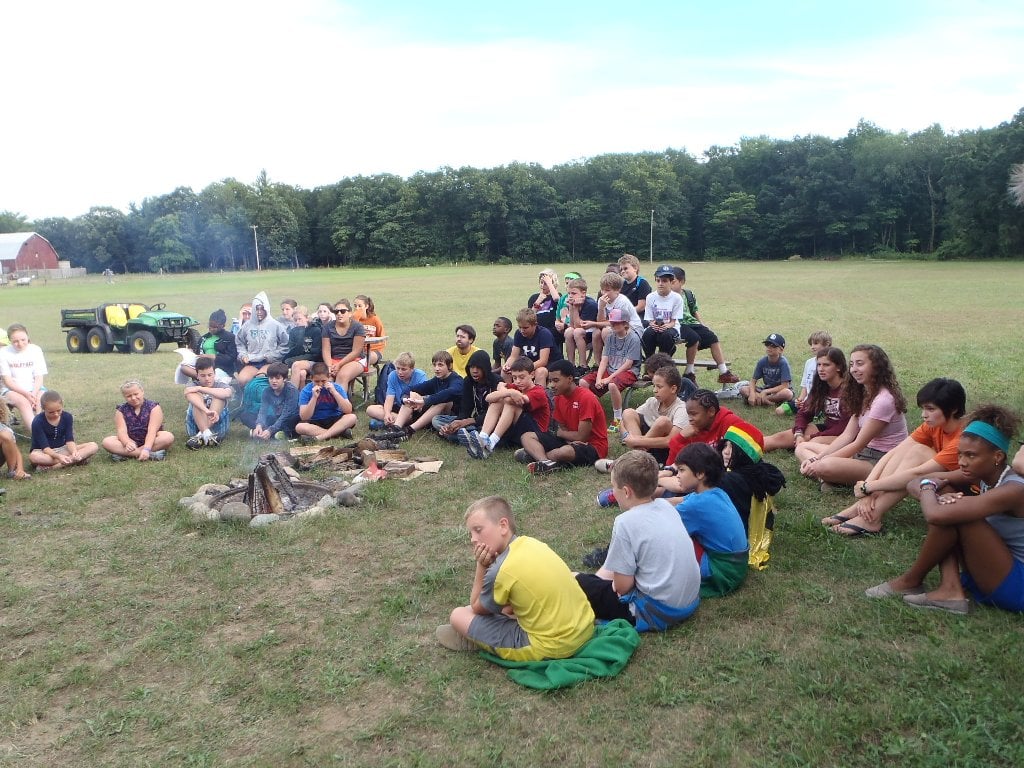
Telephone
Telephone is a classic and often humorous game that tests players’ listening and communication skills. It can be played around the campfire, and it’s sure to bring laughter and enjoyment to the group. Here’s how to play:
Objective The goal is to accurately pass a message from one player to the next, often resulting in amusing distortions and misunderstandings.
Setup
- Create a Line or Circle: Players sit in a line or circle, close enough to whisper to each other.
- Choose the Message: One player thinks of a message, phrase, or sentence to start the game.
Gameplay
- Start the Message: The first player whispers the message to the next player as quietly and clearly as possible.
- Pass it On: Each player whispers the message to the next, without repeating it or speaking it aloud.
- Reveal the Message: The last player announces the message they heard, and the original message is revealed.
- Enjoy the Outcome: The game is often played for laughs, as the message typically changes and distorts along the way.
Winning the Game
- Compare the Messages: The fun of the game lies in comparing the original message with the final version. There’s usually no winner or loser, as the game is played for entertainment and enjoyment.
Telephone is a light-hearted game that promotes listening skills, concentration, and provides entertainment through unexpected twists in the message. It’s a simple yet engaging game that brings smiles and laughter to players of all ages. Whether the message stays true to its original form or takes on a life of its own, Telephone is a delightful game that adds fun and connection to any campfire gathering.
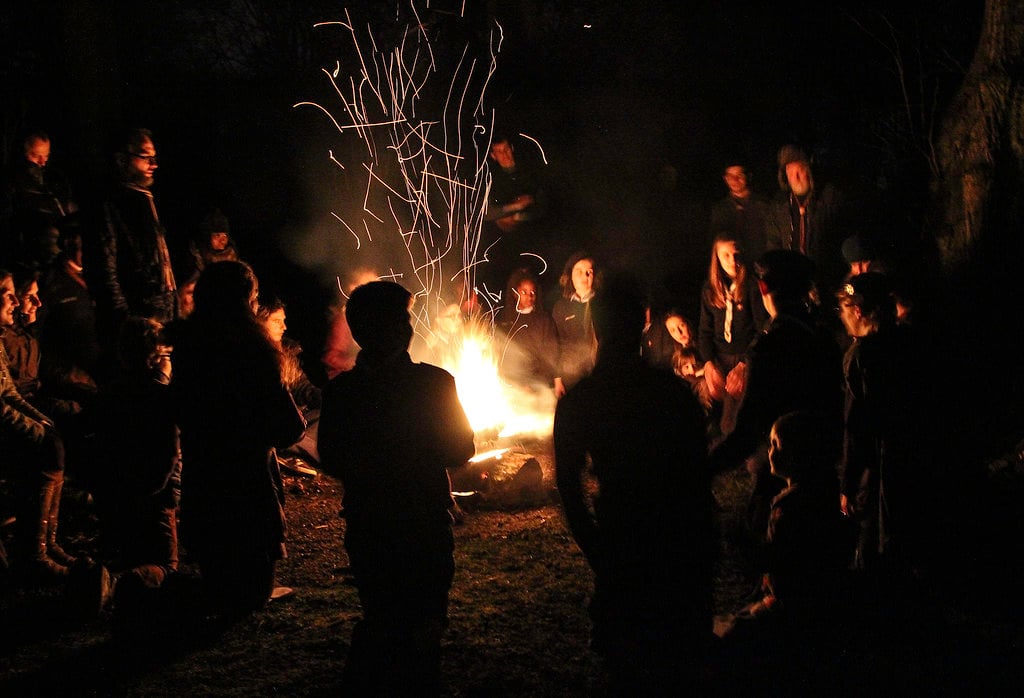
Pictionary
Pictionary is a drawing and guessing game where players sketch words or phrases, and others try to guess what they are. It’s a game that can be enjoyed around the campfire, fostering creativity and teamwork. Here’s how to play:
Objective The goal is to guess the word or phrase being drawn within a time limit.
Setup
- Divide into Teams: Players are divided into two or more teams.
- Prepare the Words/Phrases: Write down words or phrases on slips of paper and place them in a container.
Gameplay
- Choose the Word/Phrase: One player from a team selects a slip of paper and reads the word or phrase without showing it to others.
- Draw it Out: The player sketches the word or phrase without using letters or numbers.
- Guess the Word/Phrase: The player’s team attempts to guess the word or phrase within a set time limit.
- Take Turns: Teams take turns drawing and guessing.
Scoring
- Award Points: Points can be awarded for correct guesses, and the team with the most points at the end of the game wins.
Winning the Game
- Declare the Winner: The team with the most points at the end of the game is declared the winner.
Pictionary fosters creativity, teamwork, and visual communication. It’s a fun and artistic game that can be enjoyed by players of all skill levels, adding a creative twist to campfire gatherings.

20 Questions
20 Questions is a guessing game where players try to identify an object, person, or place by asking up to 20 yes-or-no questions. It’s a game that can be enjoyed around the campfire, fostering curiosity and logical thinking. Here’s how to play:
Objective The goal is to guess the mystery item within 20 questions.
Setup
- Choose the Mystery Item: One player thinks of something for others to guess, keeping it a secret.
Gameplay
- Ask Questions: Other players ask yes-or-no questions to narrow down the possibilities.
- Make a Guess: Players continue to ask questions and make guesses until the mystery item is identified or 20 questions are reached.
Winning the Game
- Guess Correctly: If the mystery item is guessed correctly within 20 questions, the guessing players win. If not, the player who chose the item wins.
20 Questions encourages critical thinking, curiosity, and logical reasoning. It’s a simple yet engaging game that can be enjoyed by players of all ages, providing a mental challenge and stimulating conversation around the campfire.

Truth or Dare
Truth or Dare is a classic party game that challenges players to answer truthfully or perform a dare. It’s a game that can be enjoyed around the campfire, fostering openness and camaraderie. Here’s how to play:
Objective The objective is to choose between answering a personal question truthfully or performing a dare.
Gameplay
- Ask Truth or Dare: Players take turns asking each other “Truth or Dare?”
- Answer or Perform: The chosen player must either answer a question truthfully or perform a dare.
- Keep it Respectful: Questions and dares should be appropriate and respectful for the group.
Winning the Game
- Enjoy the Experience: The game is often played for fun and bonding, without a competitive element. The enjoyment comes from sharing truths and completing dares.
Truth or Dare fosters openness, trust, and camaraderie. It’s a great way to get to know others better, challenge comfort zones, and have a memorable time around the campfire. Whether sharing a hidden talent, a personal story, or performing a silly dare, Truth or Dare adds excitement and connection to any campfire gathering.

Would You Rather
Would You Rather is a thought-provoking game that presents players with two challenging choices and asks them to choose one. It’s a game that can be enjoyed around the campfire, fostering reflection and conversation. Here’s how to play:
Objective The goal is to choose between two difficult or intriguing options and explain why.
Gameplay
- Present the Choices: One player presents two options to another player.
- Make a Choice: The chosen player must select one option and may explain their reasoning.
- Engage in Discussion: Players can discuss and debate the choices, fostering conversation and insight.
Winning the Game
- Enjoy the Conversation: The game is typically played for enjoyment and exploration of preferences and values, without a competitive element.
Would You Rather encourages reflection, conversation, and understanding of personal values. It’s an engaging and insightful game suitable for thoughtful discussions around the campfire, revealing preferences, beliefs, and sometimes surprising choices.

Never Have I Ever
Never Have I Ever is a revealing game that allows players to learn more about each other’s experiences and adventures. It’s a game that can be enjoyed around the campfire, fostering openness and connection. Here’s how to play:
Objective The objective is to share experiences and discover what others have or haven’t done.
Gameplay
- Make a Statement: Players take turns making “Never Have I Ever” statements about something they haven’t done.
- Admit or Deny: Other players admit if they have done the activity or deny it.
- Learn and Laugh: The game provides insight into each other’s lives and often leads to laughter and storytelling.
Winning the Game
- Enjoy the Connection: The game is often played for fun and connection, without a competitive element, allowing players to learn more about each other.
Never Have I Ever fosters openness, connection, and storytelling. It’s a great way to learn more about friends and family in a relaxed setting around the campfire, sharing experiences, adventures, and perhaps a few secrets.
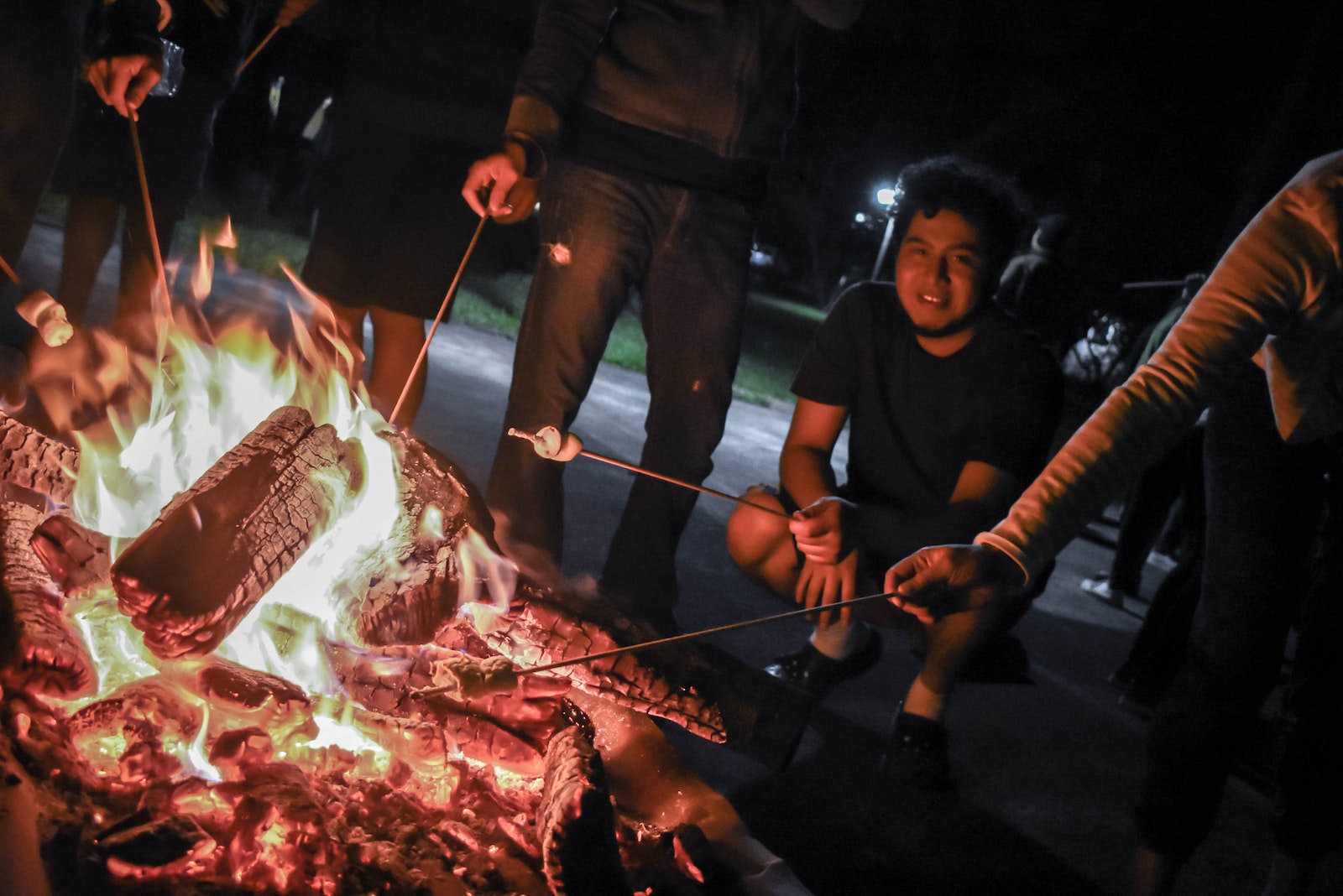
The Song Game
The Song Game is a musical challenge where players take turns singing songs based on specific words or themes. It’s a game that can be enjoyed around the campfire, bringing melody and joy to the gathering. Here’s how to play:
Objective The goal is to sing a part of a song that includes a given word or fits a specific theme.
Gameplay
- Choose the Word or Theme: Players decide on a word or theme that songs must include.
- Sing the Songs: Players take turns singing parts of songs that include the word or fit the theme.
- Avoid Repeats: Repeating a song or failing to think of one may result in elimination or a penalty.
Winning the Game
- Last Player Standing: The last player remaining can be declared the winner, or the game can be played for enjoyment without keeping score.
The Song Game encourages musical knowledge, creativity, and entertainment. It’s a joyful and melodic game that can be enjoyed by music lovers of all ages around the campfire, turning the gathering into a delightful sing-along session.
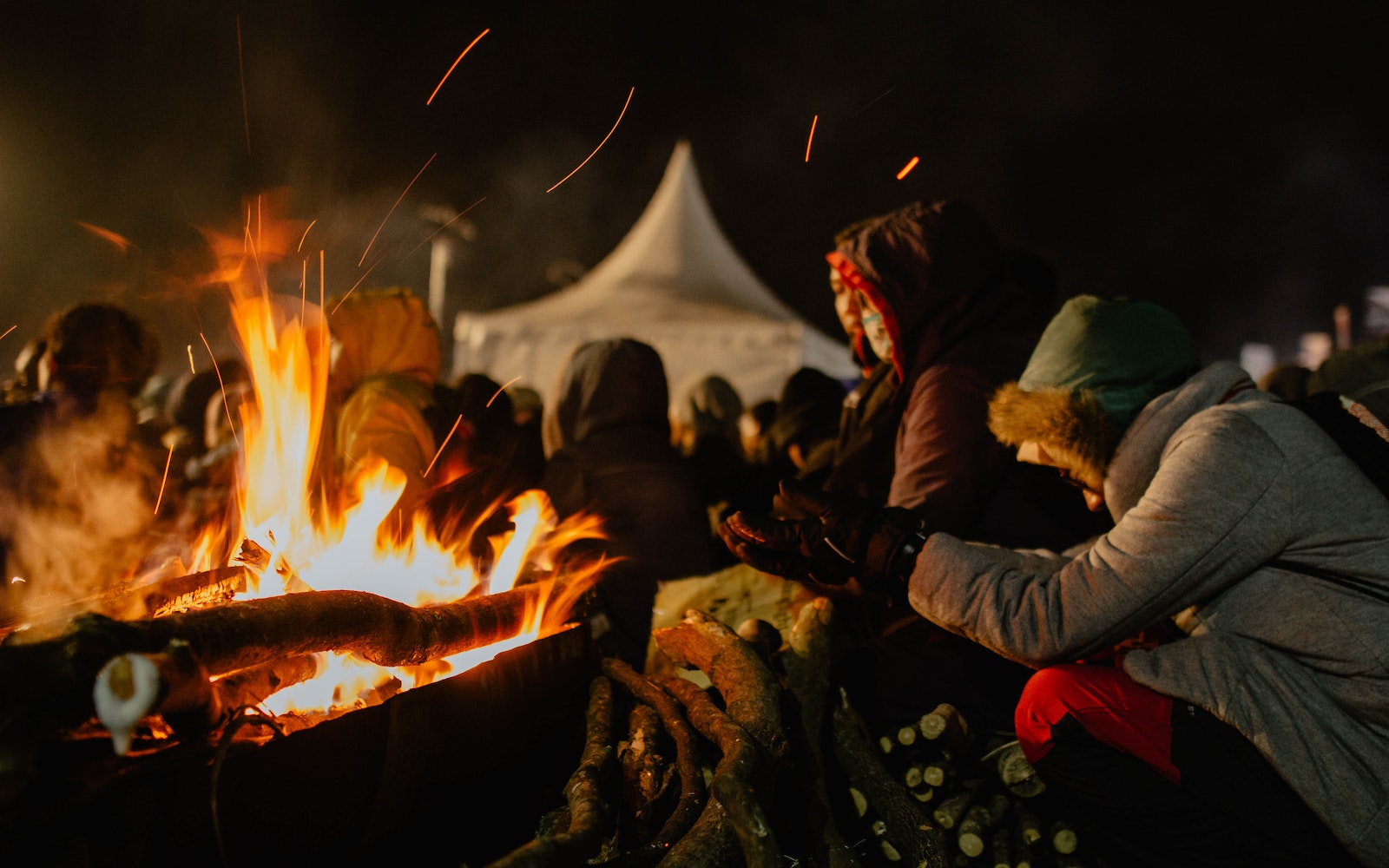
The Story Game
The Story Game is a cooperative storytelling game where players take turns adding sentences to create a collective story. It’s a game that can be enjoyed around the campfire, fostering creativity and collaboration. Here’s how to play:
Objective The goal is to create an engaging and imaginative story together.
Gameplay
- Start the Story: One player begins the story with an opening sentence.
- Add to the Story: Players take turns adding sentences, building on what has been said before.
- Embrace Creativity: Encourage creativity and unexpected twists, allowing the story to evolve in surprising ways.
- Conclude the Story: The story can be concluded after a set number of rounds or when it reaches a natural ending.
Winning the Game
- Enjoy the Creation: The game is played for enjoyment and creativity, without a competitive element. The reward is the unique and collaborative story created.
The Story Game fosters creativity, collaboration, and imagination. It’s a delightful way to weave a tale together, allowing each player to contribute their ideas and creativity around the campfire.
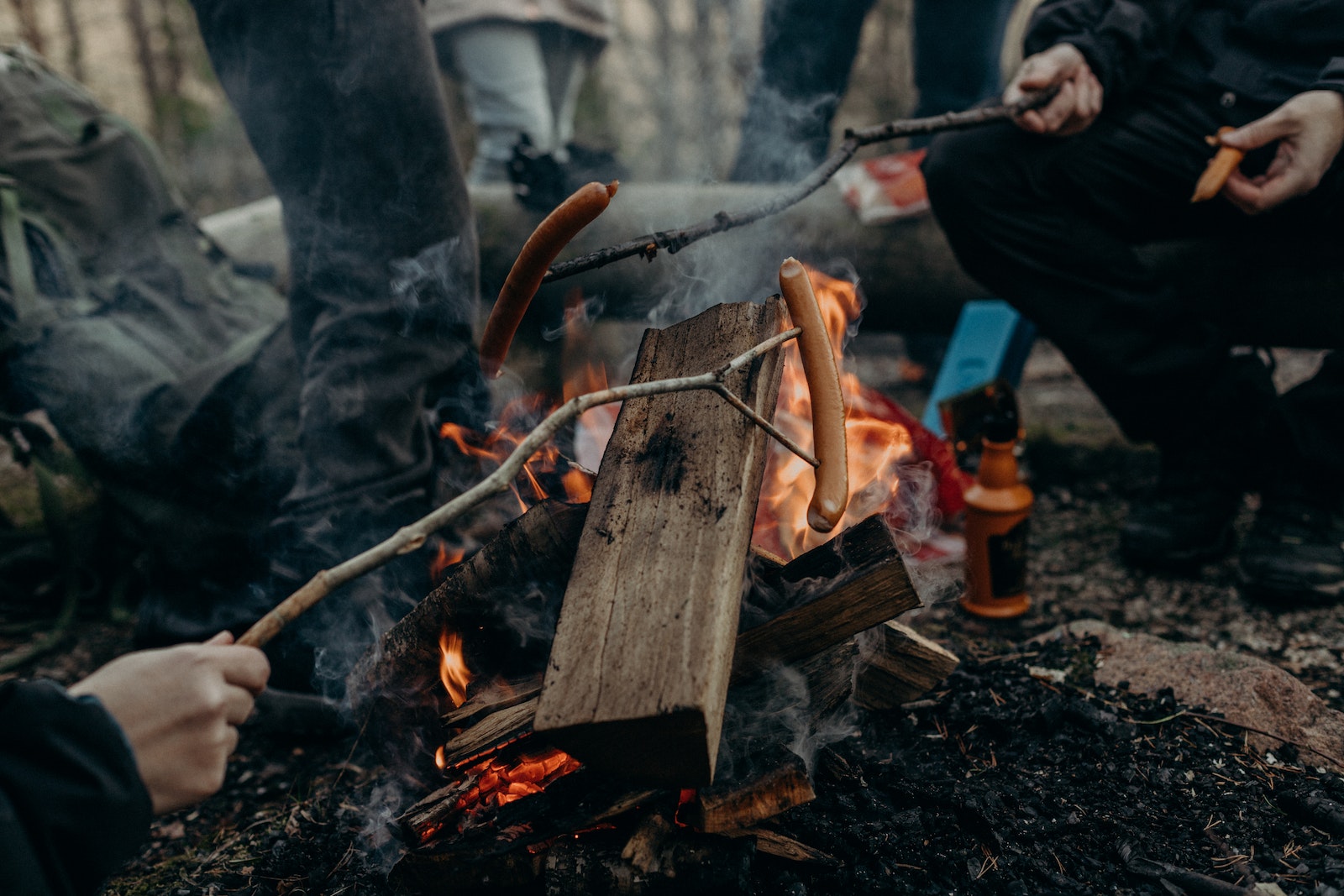
The Alphabet Game
The Alphabet Game is a word challenge where players take turns naming items within a category, following the alphabet’s order. It’s a game that can be enjoyed around the campfire, testing memory and vocabulary. Here’s how to play:
Objective The goal is to name items within a chosen category, following the alphabet from A to Z.
Gameplay
- Choose a Category: Players decide on a category, such as animals, countries, or foods.
- Follow the Alphabet: Players take turns naming items within the category, starting with A and continuing through the alphabet.
- Avoid Repeats: Repeating an item or failing to think of one may result in elimination or a penalty.
Winning the Game
- Complete the Alphabet: The game continues until the alphabet is completed or until one player remains.
The Alphabet Game encourages vocabulary knowledge, quick thinking, and concentration. It’s a simple yet engaging word game that can be enjoyed by players of all ages around the campfire, providing a mental challenge and educational fun.

The Movie Game
The Movie Game is an entertaining challenge where players take turns naming movies and actors, linking them together. It’s a game that can be enjoyed around the campfire, testing movie knowledge and memory. Here’s how to play:
Objective The goal is to link actors to movies and other actors, creating a chain of connections.
Gameplay
- Name a Movie or Actor: One player starts by naming a movie or actor.
- Link to Another: The next player must name another movie that the actor starred in or another actor from the named movie.
- Continue the Chain: Players continue linking movies and actors, creating a chain of connections.
- Avoid Mistakes: Incorrect links or failing to think of a connection may result in elimination or a penalty.
Winning the Game
- Last Player Standing: The last player remaining can be declared the winner, or the game can be played for enjoyment without keeping score.
The Movie Game encourages movie knowledge, memory, and strategic thinking. It’s an entertaining game for movie enthusiasts, providing a cinematic challenge and engaging fun around the campfire.
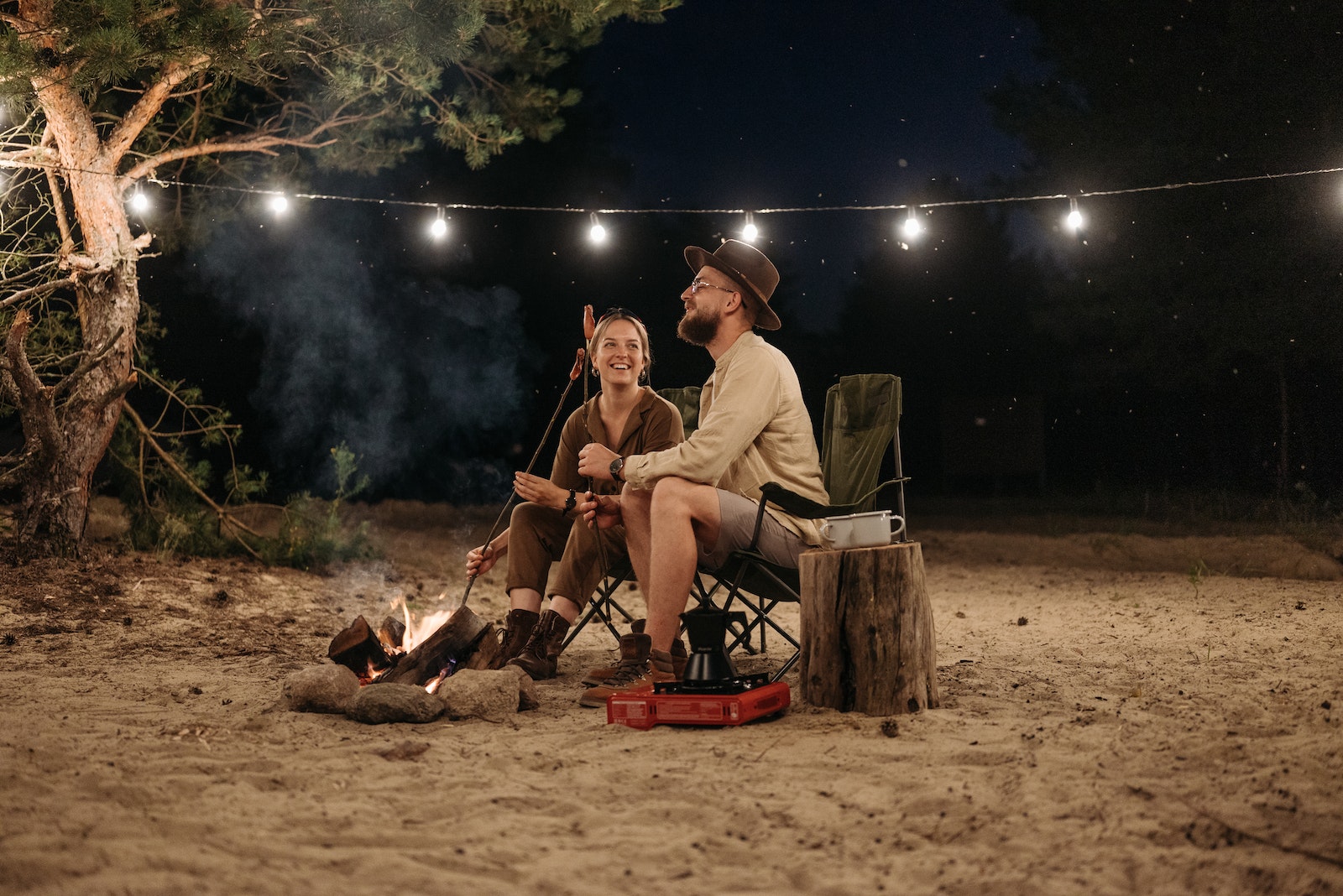
The Humming Game
The Humming Game is a lively and entertaining game where players hum tunes while others try to guess the song. It’s a game that can be enjoyed around the campfire, bringing melody and fun to the gathering. Here’s how to play:
Objective The goal is to guess the song being hummed by a player within a time limit.
Setup
- Divide into Teams: Players are divided into two or more teams.
- Prepare the Songs: Write down song titles on slips of paper and place them in a container.
Gameplay
- Choose the Song: One player from a team selects a slip of paper and reads the song title without showing it to others.
- Hum the Tune: The player hums the tune without using words or gestures.
- Guess the Song: The player’s team attempts to guess the song within a set time limit.
- Take Turns: Teams take turns humming and guessing.
Scoring
- Award Points: Points can be awarded for correct guesses, and the team with the most points at the end of the game wins.
Winning the Game
- Declare the Winner: The team with the most points at the end of the game is declared the winner.
The Humming Game fosters musical knowledge, teamwork, and entertainment. It’s a joyful and melodic game that can be enjoyed by music lovers of all ages around the campfire, turning the gathering into a delightful humming session.

The Hat Game
The Hat Game is a fast-paced and exciting game where players try to describe and guess words within a time limit. It’s a game that can be enjoyed around the campfire, fostering quick thinking and teamwork. Here’s how to play:
Objective The goal is to guess as many words as possible within a time limit.
Setup
- Divide into Teams: Players are divided into two or more teams.
- Prepare the Words: Write down words on slips of paper and place them in a hat or container.
Gameplay
- Describe the Words: One player from a team draws a slip of paper and describes the word without saying it.
- Guess the Words: The player’s team attempts to guess the word within a set time limit.
- Take Turns: Teams take turns describing and guessing.
Scoring
- Award Points: Points can be awarded for correct guesses, and the team with the most points at the end of the game wins.
Winning the Game
- Declare the Winner: The team with the most points at the end of the game is declared the winner.
The Hat Game encourages quick thinking, communication, and teamwork. It’s a fast-paced and engaging game that can be enjoyed by players of all ages around the campfire, providing a thrilling challenge and competitive fun.
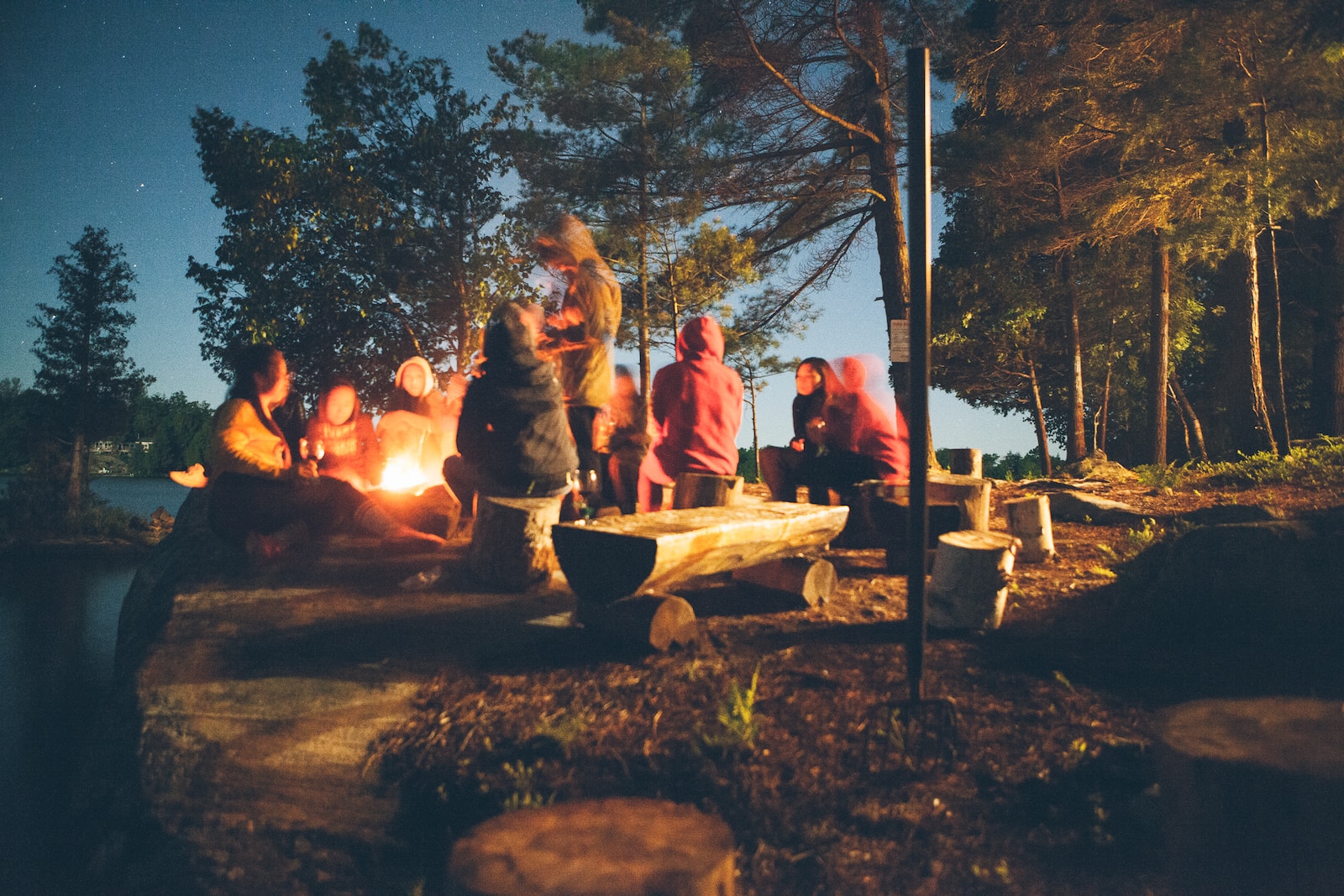
The Categories Game
The Categories Game is a fast-paced word game where players take turns naming items within a chosen category. It’s a game that can be enjoyed around the campfire, testing quick thinking and vocabulary. Here’s how to play:
Objective The goal is to name items within a chosen category without repeating any previous answers.
Gameplay
- Choose a Category: Players decide on a category, such as fruits, cities, or famous authors.
- Name the Items: Players take turns naming items within the category.
- Avoid Repeats and Pauses: Repeating an item or pausing too long may result in elimination or a penalty.
Winning the Game
- Last Player Standing: The last player remaining can be declared the winner, or the game can be played for enjoyment without keeping score.
The Categories Game encourages quick thinking, vocabulary knowledge, and concentration. It’s a simple yet engaging word game that can be enjoyed by players of all ages around the campfire, providing a mental challenge and educational fun.

The Silent Game
The Silent Game is a unique challenge where players attempt to remain silent for as long as possible. It’s a game that can be enjoyed around the campfire, fostering focus and self-control. Here’s how to play:
Objective The goal is to remain silent for the longest time, resisting laughter, talking, or making noise.
Gameplay
- Start the Timer: Players agree on a time limit or simply begin the game.
- Remain Silent: Players must remain silent, avoiding talking, laughing, or making intentional noise.
- Resist Distractions: Other players may attempt to make each other laugh or break the silence.
Winning the Game
- Last Player Silent: The last player remaining silent can be declared the winner, or the game can be played for enjoyment and self-control practice.
The Silent Game encourages focus, self-control, and mindfulness. It’s a unique and meditative game that can be enjoyed by players of all ages around the campfire, providing a quiet and focused challenge.
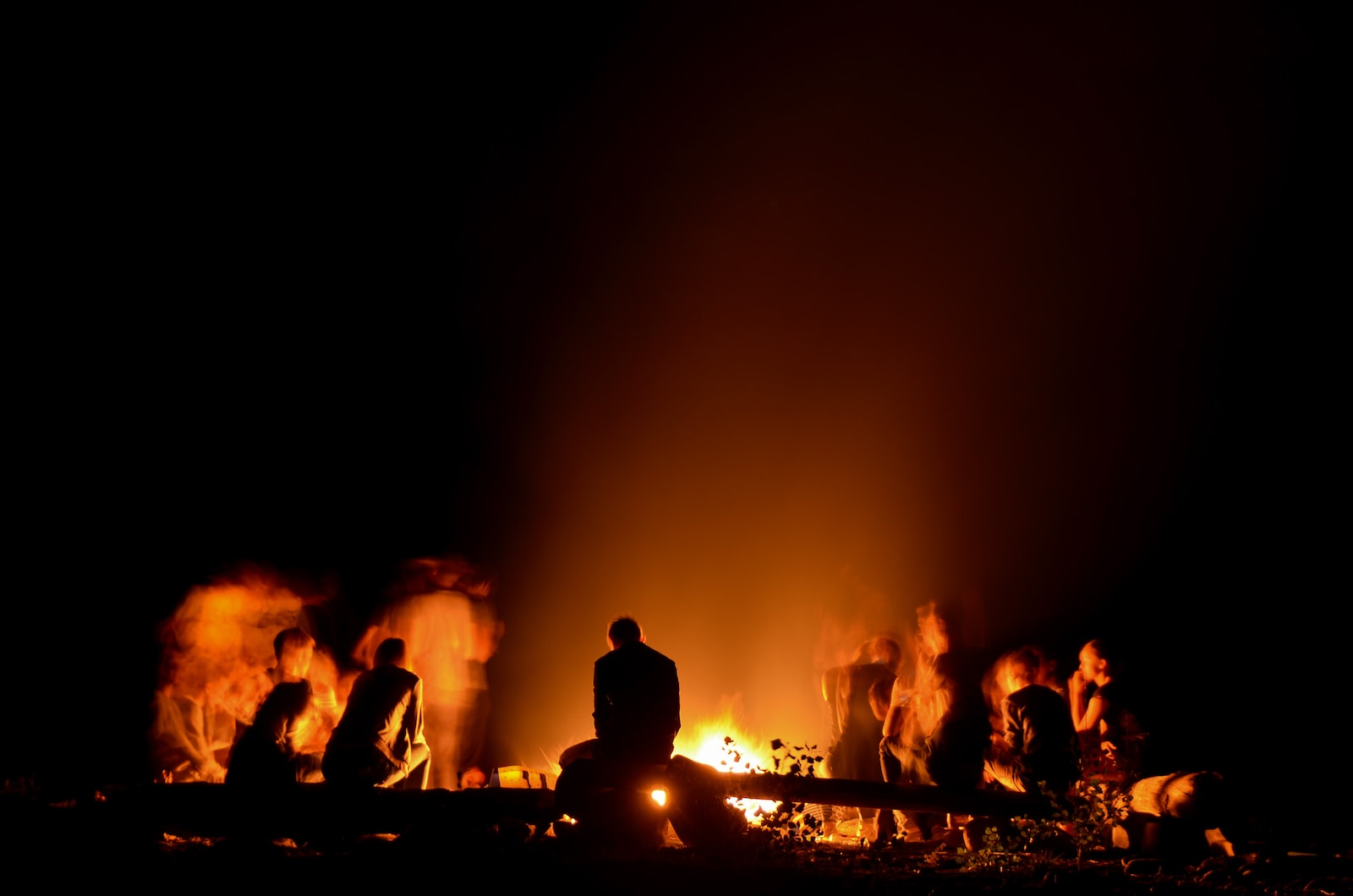
The Hot Seat Game
The Hot Seat Game is a revealing question-and-answer game where players take turns being in the “hot seat” and answering questions from others. It’s a game that can be enjoyed around the campfire, fostering openness and connection. Here’s how to play:
Objective The goal is to learn more about each other through insightful questions and honest answers.
Gameplay
- Choose the Hot Seat: One player takes the “hot seat” and prepares to answer questions.
- Ask Questions: Other players take turns asking questions, seeking to learn more about the player in the hot seat.
- Answer Honestly: The player in the hot seat answers the questions honestly and openly.
- Take Turns: Players take turns being in the hot seat and asking questions.
Winning the Game
- Enjoy the Connection: The game is often played for fun and connection, without a competitive element, allowing players to learn more about each other.
The Hot Seat Game fosters openness, curiosity, and connection. It’s a great way to get to know others better in a relaxed setting around the campfire, sharing insights, perspectives, and personal stories.
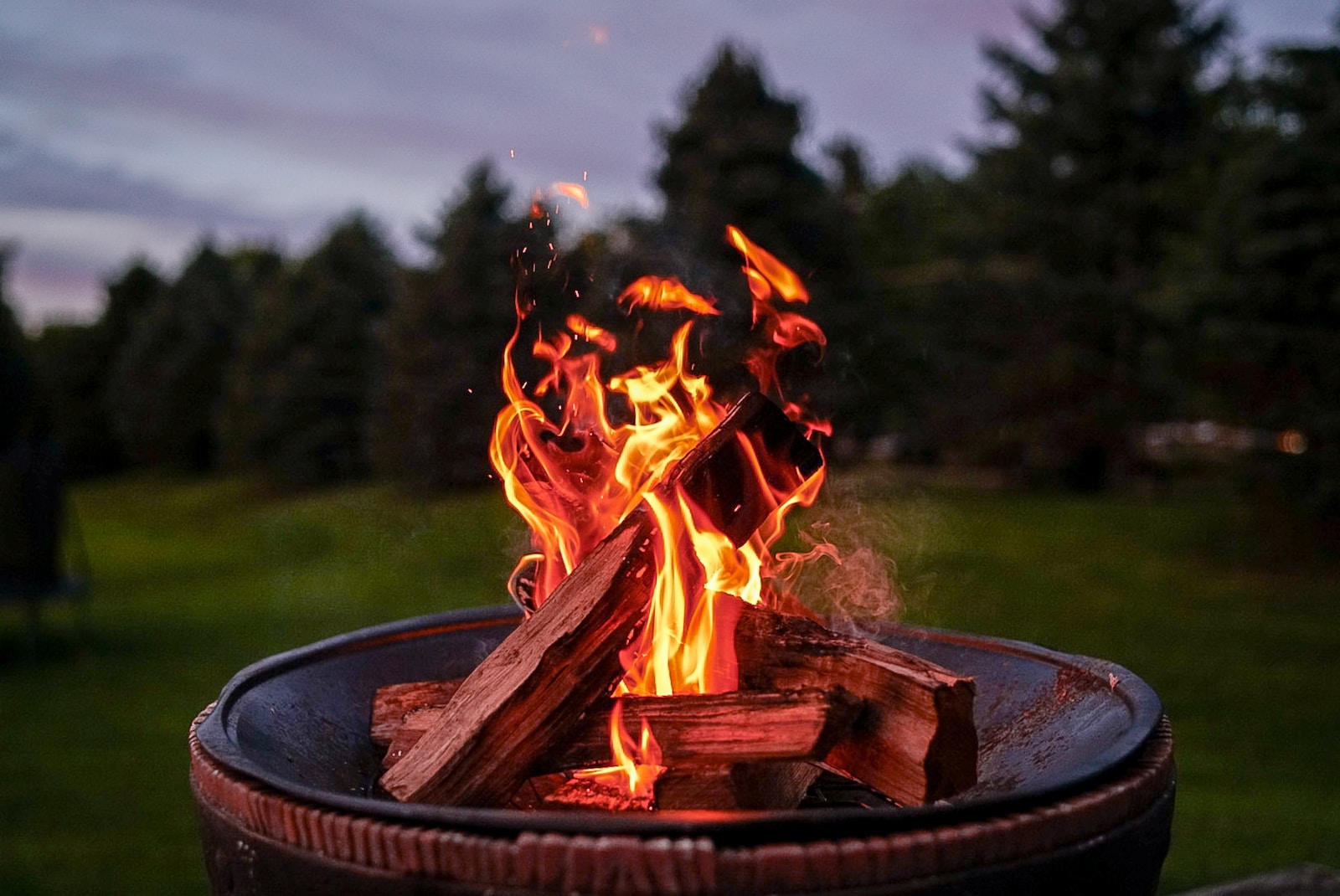
The Wink Murder Game
The Wink Murder Game is a mysterious and thrilling game where one player secretly “murders” others by winking at them, while the rest try to identify the murderer. It’s a game that can be enjoyed around the campfire, fostering observation and deduction. Here’s how to play:
Objective The goal is to identify the “murderer” before they “kill” all the other players.
Setup
- Choose the Murderer: One player is secretly chosen as the murderer by drawing cards or another random method.
- Choose the Detective: One player is chosen as the detective and must identify the murderer.
Gameplay
- Murder by Winking: The murderer winks at other players to “kill” them, doing so secretly so the detective doesn’t see.
- Investigate: The detective observes and may ask questions to try to identify the murderer.
- Avoid False Accusations: The detective has limited chances to accuse, and false accusations may result in penalties.
Winning the Game
- Catch the Murderer: If the detective identifies the murderer, the detective wins.
- Evade Capture: If the murderer “kills” all other players without being caught, the murderer wins.
The Wink Murder Game encourages observation, deduction, and strategic deception. It’s a thrilling and mysterious game that can be enjoyed by players of all ages around the campfire, providing suspense and excitement.

The Sardines Game
The Sardines Game is a reverse hide-and-seek game where one player hides, and the rest try to find and join them. It’s a game that can be enjoyed around the campfire area, fostering exploration and teamwork. Here’s how to play:
Objective The goal is to find the hidden player and join them, hiding together until everyone is found.
Gameplay
- Choose the Hider: One player is chosen to hide while others close their eyes or look away.
- Search and Join: Players search for the hidden player, and when found, they join them in hiding.
- Gather Together: The game continues until all players are hiding together.
Winning the Game
- Enjoy the Adventure: The game is often played for fun and adventure, without a competitive element, allowing players to enjoy the exploration and teamwork.
The Sardines Game encourages exploration, teamwork, and playful adventure. It’s a fun and exciting game that can be enjoyed by players of all ages around the campfire area, providing a unique twist on hide-and-seek.

The Who Am I? Game
The Who Am I? Game is a guessing game where players try to identify a character or famous person based on yes-or-no questions. It’s a game that can be enjoyed around the campfire, fostering inquiry and logical thinking. Here’s how to play:
Objective The goal is to guess the character or person assigned to you by asking yes-or-no questions.
Setup
- Assign Characters: Players are assigned characters or famous people, either by drawing cards or having others write them down.
Gameplay
- Ask Questions: Players take turns asking yes-or-no questions to narrow down their character’s identity.
- Make a Guess: Players continue to ask questions and make guesses until their character is identified.
Winning the Game
- Guess Correctly: The game continues until all players have guessed their characters, or it can be played for enjoyment without keeping score.
The Who Am I? Game encourages inquiry, logical thinking, and knowledge of characters or famous people. It’s a simple yet engaging guessing game that can be enjoyed by players of all ages around the campfire, providing a mental challenge and entertaining inquiry.

Fortunately/Unfortunately
Fortunately/Unfortunately is a creative storytelling game where players take turns adding to a story using alternating “fortunately” and “unfortunately” statements. It’s a game that can be enjoyed around the campfire, fostering imagination and collaboration. Here’s how to play:
Objective The goal is to create an engaging and often humorous story by alternating between positive (fortunately) and negative (unfortunately) plot twists.
Gameplay
- Start the Story: One player begins the story with a statement, such as “Fortunately, I found a treasure map.”
- Add Twists: The next player continues with an “unfortunately” statement, like “Unfortunately, the map was torn in half.”
- Continue the Story: Players continue alternating between “fortunately” and “unfortunately,” adding twists and turns to the story.
- Conclude the Story: The game can continue for a set number of turns or until players decide to end the story.
Winning the Game
- Enjoy the Creativity: The game is often played for fun and creativity, without a competitive element, allowing players to enjoy the imaginative storytelling.
Fortunately/Unfortunately encourages creativity, collaboration, and storytelling skills. It’s a simple yet engaging game that can be enjoyed by players of all ages around the campfire, providing a platform for imaginative and collaborative storytelling.

Ghost in the Graveyard
Ghost in the Graveyard is a thrilling hide-and-seek game played in the dark, where one player is the “ghost,” and the others try to find them. It’s a game that can be enjoyed around the campfire area, fostering excitement and adventure. Here’s how to play:
Objective The goal is to find the “ghost” without being tagged.
Gameplay
- Choose the Ghost: One player is chosen to be the ghost and hides while others close their eyes or look away.
- Search for the Ghost: Players search for the ghost, trying to find them without being tagged.
- Avoid the Ghost: If the ghost is found, players must run back to a safe zone without being tagged.
- Choose a New Ghost: The first player tagged becomes the new ghost.
Winning the Game
- Enjoy the Adventure: The game is often played for fun and adventure, without a competitive element, allowing players to enjoy the excitement and thrill of the chase.
Ghost in the Graveyard encourages exploration, agility, and teamwork. It’s a fun and exciting game that can be enjoyed by players of all ages around the campfire area, providing a spooky and thrilling hide-and-seek adventure.

I’m Going to the Moon
I’m Going to the Moon is a memory and creativity game where players take turns adding items to a list, repeating the entire list each time. It’s a game that can be enjoyed around the campfire, fostering memory and imagination. Here’s how to play:
Objective The goal is to remember and repeat the growing list of items, adding a new item each turn.
Gameplay
- Start the Journey: One player begins by saying, “I’m going to the moon, and I’m taking…” followed by an item of their choice.
- Repeat and Add: The next player repeats the previous items and adds a new one.
- Continue the Journey: Players continue repeating and adding items, following the order.
- Avoid Mistakes: If a player makes a mistake or forgets an item, they may be out of the game or receive a penalty.
Winning the Game
- Last Player Standing: The last player remaining can be declared the winner, or the game can be played for enjoyment without keeping score.
I’m Going to the Moon encourages memory, creativity, and attention to detail. It’s a simple yet engaging game that can be enjoyed by players of all ages around the campfire, providing a mental challenge and imaginative journey.

Going on a Picnic Game
Going on a Picnic is a memory game where players take turns adding items to a virtual picnic basket, following a secret pattern or rule. It’s a game that can be enjoyed around the campfire, fostering memory and pattern recognition. Here’s how to play:
Objective The goal is to figure out the secret pattern or rule and add items to the picnic basket accordingly.
Gameplay
- Choose a Rule: One player thinks of a secret rule or pattern, such as items starting with a specific letter.
- Add Items: Players take turns adding items to the picnic basket, trying to follow the secret rule.
- Correct or Incorrect: The player who knows the rule confirms if the item fits the rule or not.
- Guess the Rule: Players try to figure out the secret rule by adding items and observing which ones are accepted.
Winning the Game
- Discover the Pattern: The game continues until all players figure out the rule, or it can be played for enjoyment and mental challenge without keeping score.
Going on a Picnic encourages memory, pattern recognition, and logical thinking. It’s a fun and thought-provoking game that can be enjoyed by players of all ages around the campfire, providing a mental challenge and playful exploration.
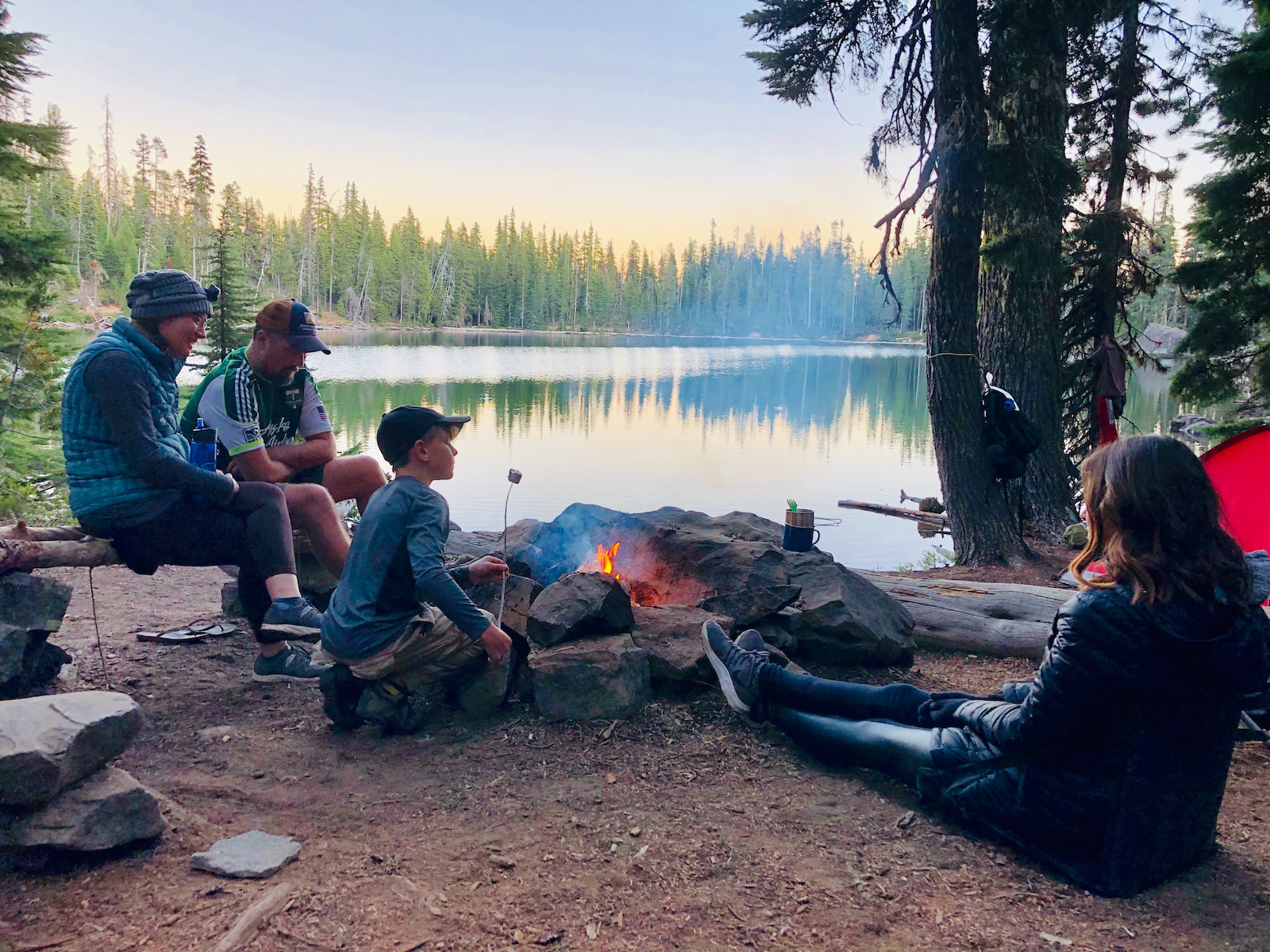
The Chocolate Game
The Chocolate Game is a delightful and competitive game where players race to eat pieces of chocolate while wearing gloves. It’s a game that can be enjoyed around the campfire, fostering excitement and a sweet treat. Here’s how to play:
Objective The goal is to eat as many pieces of chocolate as possible within the rules.
Setup
- Prepare the Chocolate: Place a bar of chocolate on a plate with a knife and fork.
- Provide Gloves: Have a pair of gloves ready for players to wear.
Gameplay
- Roll the Dice: Players take turns rolling a die, aiming to roll a specific number.
- Wear the Gloves: If a player rolls the required number, they put on the gloves and start eating the chocolate using the knife and fork.
- Race Against Time: The next player immediately starts rolling the die, and if they roll the required number, the current player must stop, and the next player takes over.
- Continue the Game: The game continues with players taking turns, racing against time to eat the chocolate.
Winning the Game
- Enjoy the Treat: The game can be played for enjoyment and the sweet reward of chocolate, without keeping score.
The Chocolate Game encourages excitement, competition, and dexterity. It’s a fun and tasty game that can be enjoyed by players of all ages around the campfire, providing a sweet challenge and delightful treat.

The Flour Game
The Flour Game is a messy and entertaining game where players cut slices from a flour mound with a hidden object inside. It’s a game that can be enjoyed around the campfire, fostering laughter and careful precision. Here’s how to play:
Objective The goal is to cut slices from the flour mound without causing the hidden object to fall.
Setup
- Prepare the Flour Mound: Pack flour tightly into a bowl and turn it upside down to create a mound. Place a small object, like a candy, on top.
- Provide a Knife: Have a knife ready for players to use.
Gameplay
- Cut the Flour: Players take turns cutting slices from the flour mound, being careful not to cause the object to fall.
- Avoid the Object: If a player causes the object to fall, they must retrieve it using only their mouth.
- Continue the Game: The game continues with players taking turns, trying to avoid causing the object to fall.
Winning the Game
- Enjoy the Laughter: The game is often played for fun and laughter, without keeping score, allowing players to enjoy the messy and hilarious challenge.
The Flour Game encourages careful precision, patience, and a sense of humor. It’s a messy and entertaining game that can be enjoyed by players of all ages around the campfire, providing a unique and laugh-filled challenge.

The Cereal Box Game
The Cereal Box Game is a physical and entertaining game where players take turns picking up a cereal box using only their teeth, without touching the ground with anything but their feet. It’s a game that can be enjoyed around the campfire, fostering flexibility and balance. Here’s how to play:
Objective The goal is to pick up the cereal box without touching the ground with anything but your feet.
Setup
- Prepare the Box: Place an empty cereal box on the ground, open side up.
Gameplay
- Pick Up the Box: Players take turns trying to pick up the box using only their teeth.
- Avoid Touching the Ground: Players must not touch the ground with anything but their feet.
- Trim the Box: After each round, trim the box to make it shorter, increasing the challenge.
- Continue the Game: The game continues with players taking turns, trying to pick up the increasingly shorter box.
Winning the Game
- Last Player Standing: The last player remaining who can pick up the box is declared the winner.
The Cereal Box Game encourages flexibility, balance, and determination. It’s a physical and entertaining game that can be enjoyed by players of all ages around the campfire, providing a unique and flexible challenge.

The After Eight Game
The After Eight Game is a delightful and amusing game where players attempt to move an After Eight mint chocolate from their forehead to their mouth using only facial muscles. It’s a game that can be enjoyed around the campfire, fostering laughter and dexterity. Here’s how to play:
Objective The goal is to move the After Eight mint chocolate from the forehead to the mouth without using hands.
Setup
- Provide the Chocolates: Have After Eight mint chocolates ready for each player.
Gameplay
- Place the Chocolate: Players place an After Eight on their forehead.
- Move the Chocolate: Using only facial muscles, players attempt to move the chocolate to their mouth.
- Avoid Dropping: If the chocolate falls, the player must start over.
- Continue the Game: The game continues with players taking turns, trying to successfully move the chocolate.
Winning the Game
- Enjoy the Treat: The game can be played for enjoyment and the sweet reward of chocolate, without keeping score.
The After Eight Game encourages dexterity, patience, and a sense of humor. It’s a delicate and entertaining game that can be enjoyed by players of all ages around the campfire, providing a sweet and amusing challenge.

The Orange Game
The Orange Game is a cooperative and funny game where players pass an orange to each other using only their chins and necks. It’s a game that can be enjoyed around the campfire, fostering teamwork and laughter. Here’s how to play:
Objective The goal is to pass the orange from one player to the next without using hands.
Setup
- Provide the Orange: Have an orange ready for the game.
Gameplay
- Start the Pass: The first player places the orange under their chin and attempts to pass it to the next player’s chin.
- Avoid Dropping: If the orange falls, the players must start over.
- Continue the Pass: The game continues with players taking turns, trying to successfully pass the orange.
Winning the Game
- Enjoy the Laughter: The game is often played for fun and laughter, without keeping score, allowing players to enjoy the cooperative and hilarious challenge.
The Orange Game encourages teamwork, communication, and a sense of humor. It’s a cooperative and funny game that can be enjoyed by players of all ages around the campfire, providing a unique and laugh-filled challenge.
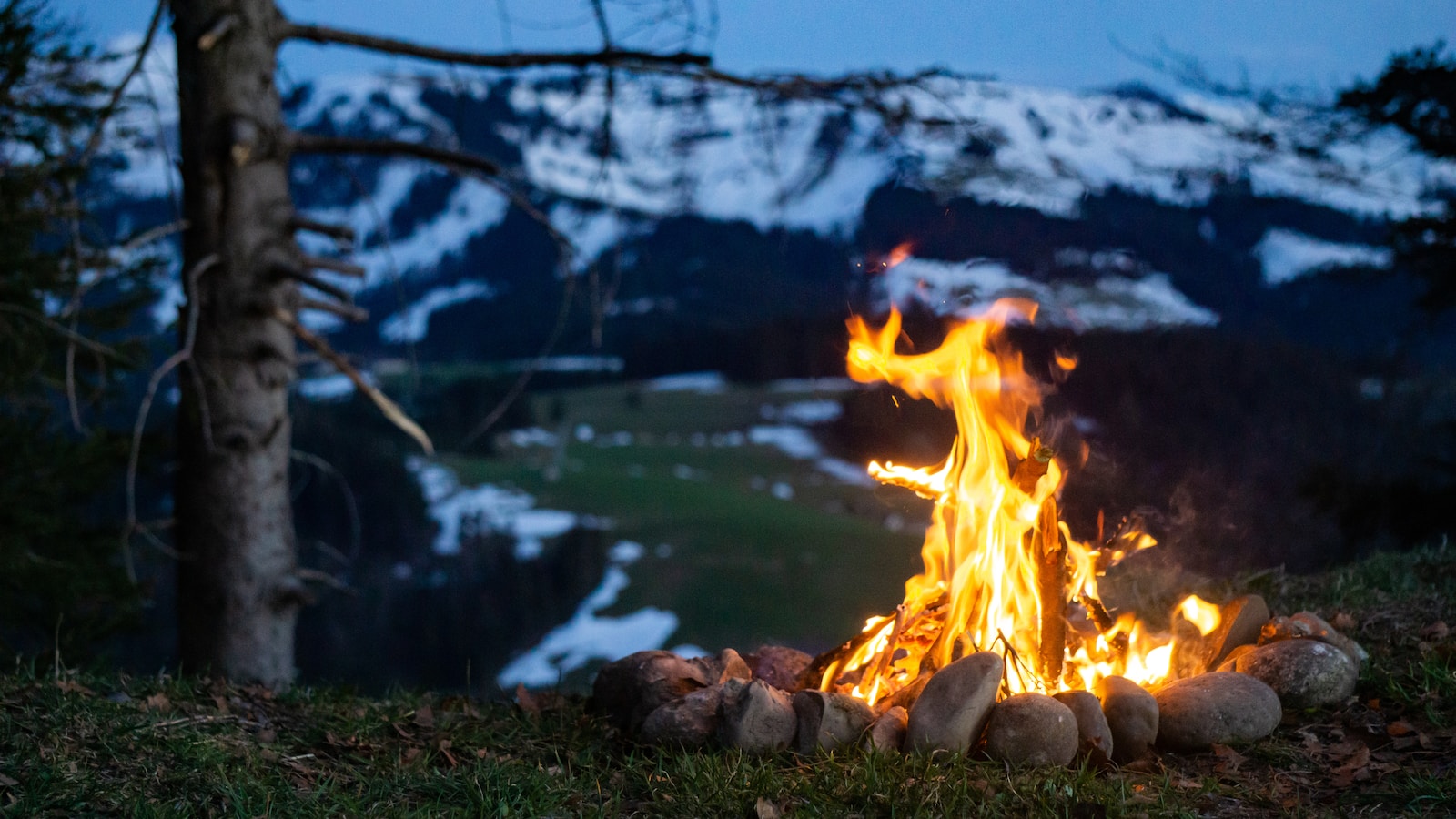
The Stick Game
The Stick Game is a rhythmic and observational game where players attempt to follow a pattern with sticks, and others try to guess the pattern. It’s a game that can be enjoyed around the campfire, fostering rhythm and observation. Here’s how to play:
Objective The goal is to figure out the secret pattern or rule of the stick game.
Setup
- Prepare the Sticks: Have sticks or similar objects ready for the game.
Gameplay
- Choose a Rule: One player thinks of a secret rule or pattern for arranging or moving the sticks.
- Demonstrate the Pattern: The player demonstrates the pattern, and others try to replicate it.
- Guess the Rule: Players take turns attempting to follow the pattern and guessing the rule.
- Correct or Incorrect: The player who knows the rule confirms if the pattern fits the rule or not.
Winning the Game
- Discover the Pattern: The game continues until all players figure out the rule, or it can be played for enjoyment and mental challenge without keeping score.
The Stick Game encourages rhythm, observation, and logical thinking. It’s a fun and thought-provoking game that can be enjoyed by players of all ages around the campfire, providing a mental challenge and rhythmic exploration.

The Animal Game
The Animal Game is an engaging and educational game where players take turns naming animals, without repeating any previously mentioned. It’s a game that can be enjoyed around the campfire, fostering knowledge, memory, and quick thinking. Here’s how to play:
Objective The goal is to name an animal that hasn’t been mentioned before, following specific rules or categories.
Gameplay
- Choose a Category: Players can decide on a specific category, such as mammals, birds, or a specific region’s fauna.
- Start Naming Animals: One player starts by naming an animal within the chosen category.
- Avoid Repeating: The next player names a different animal, ensuring not to repeat any previously mentioned.
- Continue the Game: Players continue taking turns, naming unique animals and avoiding repetition.
- Avoid Mistakes: If a player repeats an animal or can’t think of a new one, they may be out of the game or receive a penalty.
Winning the Game
- Last Player Standing: The last player remaining can be declared the winner, or the game can be played for enjoyment and knowledge enhancement without keeping score.
The Animal Game encourages knowledge, memory, and quick thinking. It’s an engaging and educational game that can be enjoyed by players of all ages around the campfire, providing a mental challenge and a fun way to explore the animal kingdom.

Duck, Duck, Goose: A Classic and Energetic Campfire Game
Duck, Duck, Goose is a timeless and lively game often played by children but can be enjoyed by all ages. It’s a game that encourages physical activity, quick reactions, and lots of laughter. Here’s how to play:
Objective The main objective of the game is to run around the circle and take the empty spot without being tagged.
Setup
- Form a Circle: Players sit in a circle, facing inward.
- Choose the First “It”: Select one player to be “It” who will walk around the outside of the circle.
Gameplay
- Walk the Circle: “It” walks around the circle, tapping the other players on the head, saying “Duck” each time.
- Call “Goose”: “It” chooses a player by tapping them on the head and saying “Goose.”
- Run Around the Circle: The chosen “Goose” jumps up and chases “It” around the circle, trying to tag them before they sit in the “Goose’s” spot.
- New “It”: If “It” is tagged, they remain “It” for another round. If not, the “Goose” becomes the new “It.”
Winning the Game
- Enjoy the Fun: The game is typically played for enjoyment rather than competition, and there’s no specific winning condition.
Duck, Duck, Goose is a delightful choice for family gatherings, school events, or simply a fun time around the campfire. It’s an excellent way to burn off energy and enjoy some playful competition.
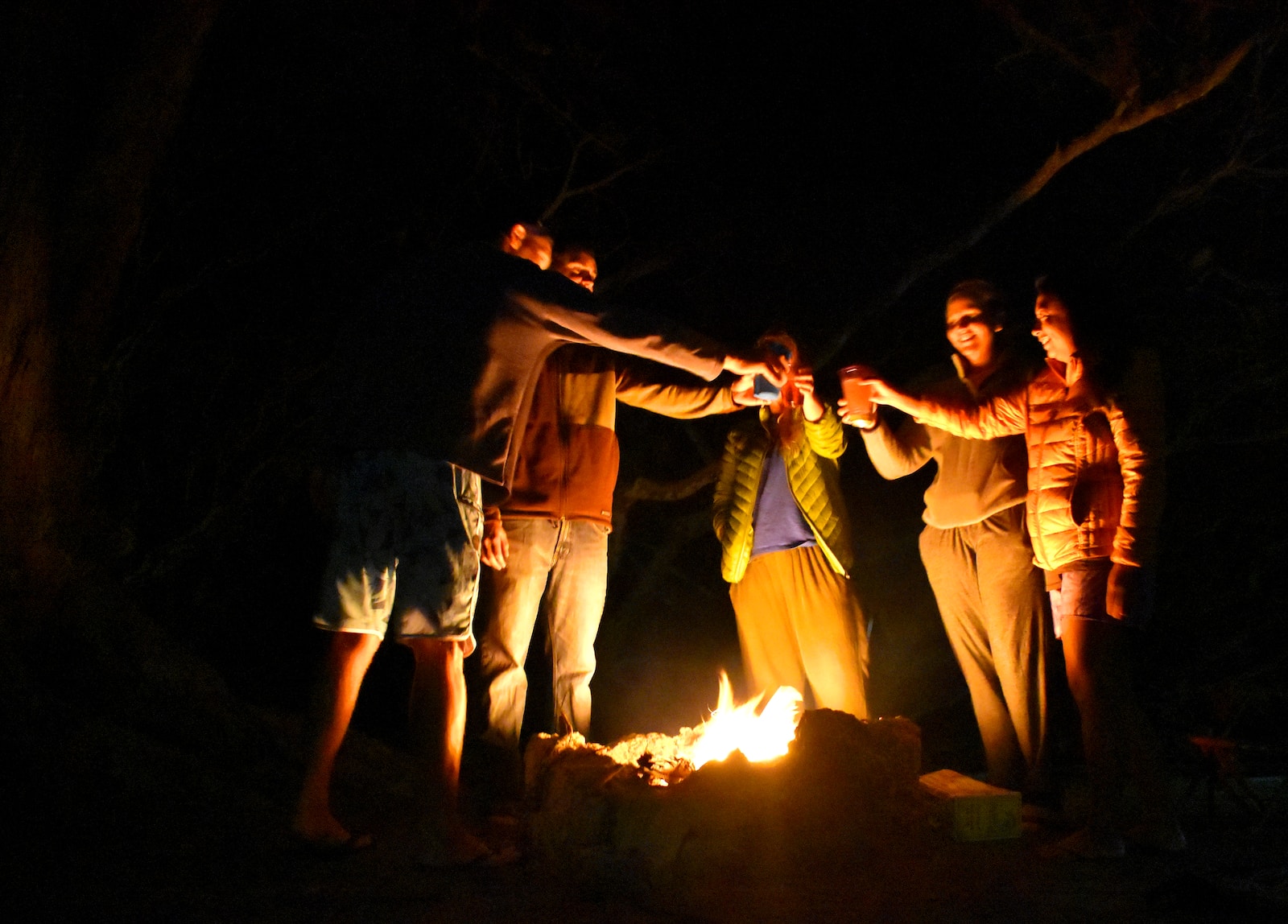
The Human Knot: A Collaborative and Problem-Solving Campfire Game
The Human Knot is an engaging and cooperative game that challenges players to untangle themselves from a human knot. It’s a game that fosters teamwork, communication, and problem-solving. Here’s how to play:
Objective The goal is to untangle the human knot without breaking the chain of hands.
Setup
- Form a Circle: Players stand in a circle, facing inward.
- Create the Knot: Players reach across the circle with both hands to grab the hands of two different people, forming a human knot.
Gameplay
- Untangle the Knot: Players must work together to untangle themselves without letting go of the hands they are holding.
- Communicate and Collaborate: Players communicate, twist, and maneuver to untangle the knot, helping each other along the way.
- Avoid Breaking the Chain: The challenge is to untangle the knot without breaking the chain of hands.
Winning the Game
- Solve the Puzzle: The game is won when the group successfully untangles the knot, returning to a circle or a straight line without breaking handholds.
The Human Knot is a fantastic team-building exercise for corporate events, youth groups, or any gathering where collaboration and problem-solving are desired. It’s a physical and mental challenge that brings people together and encourages them to work as a cohesive unit.
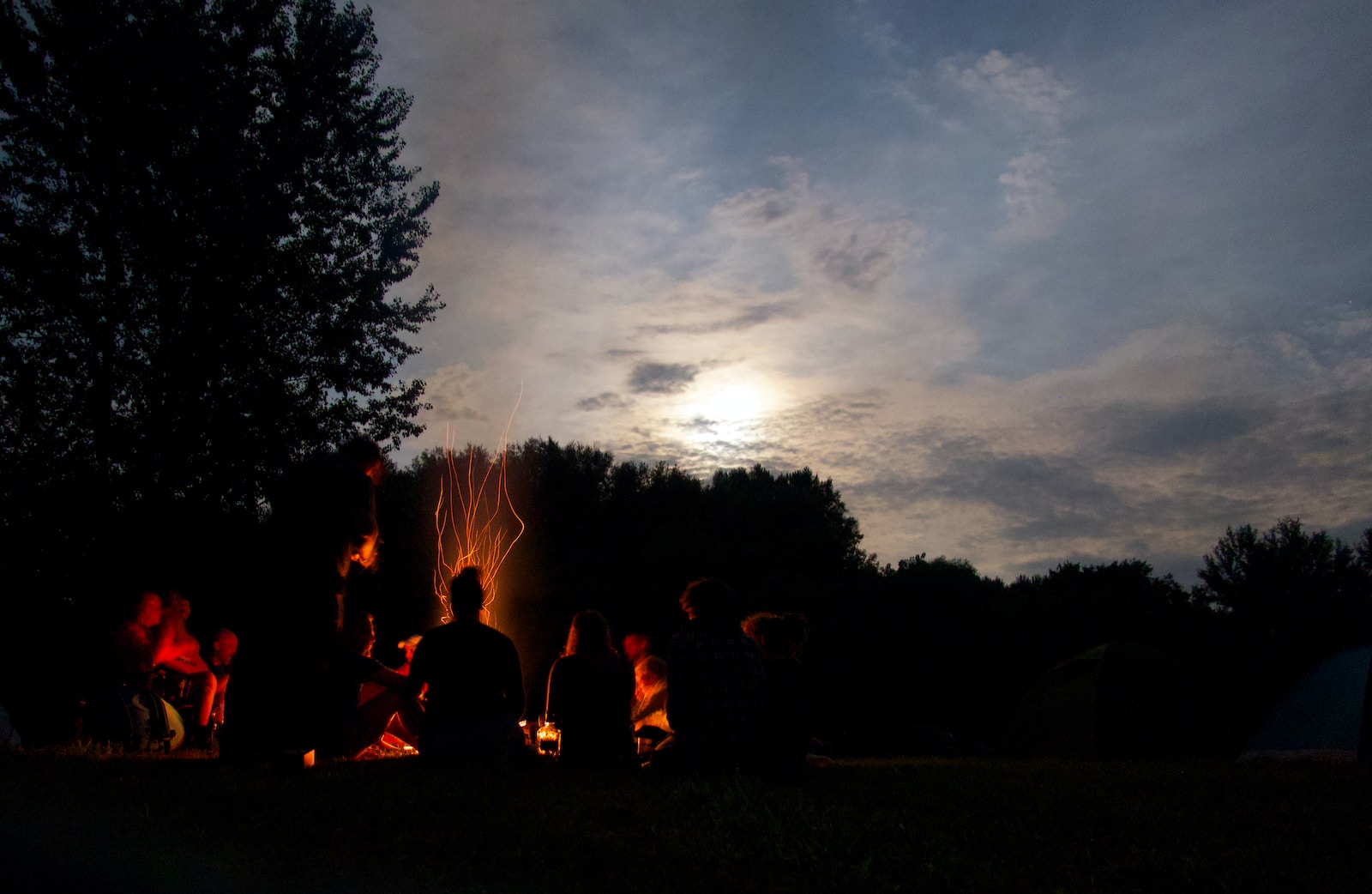
Conclusion
Campfire games are more than mere pastimes; they are the heartbeat of communal gatherings, the spark that ignites laughter, connection, and unforgettable memories. From the simplest word games to the most engaging physical challenges, they transform the flickering glow of a campfire into a stage for creativity, teamwork, and joy.
In embracing the world of campfire games, we’ve explored the diverse array of games suitable for various group sizes and ages, delved into the reasons that make these games an essential part of outdoor gatherings, and underscored the vital safety precautions that ensure a fun and secure experience.
Whether you’re a seasoned camper or embarking on your first outdoor adventure, the inclusion of campfire games offers a unique opportunity to deepen relationships, challenge minds, and create shared stories that linger long after the fire has died down. They are a celebration of human connection, a testament to the simple pleasures that unite us, and a reminder that sometimes, the most meaningful moments are found in the glow of a campfire, surrounded by friends, family, and the timeless magic of games.
So pack your bags, gather your loved ones, and head to the great outdoors. The campfire awaits, and with it, a world of games, laughter, and memories waiting to be created. Happy camping!

Frequently Asked Questions (FAQ) about Campfire Games
Q: What are some fun campfire games for adults?
A: Fun campfire games for adults can range from intellectual challenges to humorous icebreakers. Games like “Werewolf,” “Two Truths and a Lie,” or “Would You Rather” are perfect for adult gatherings. These games promote interaction, laughter, and can be tailored to suit the interests and dynamics of the group.
Q: Can you recommend campfire games for kids that are both entertaining and safe?
A: Absolutely! Campfire games for kids should be engaging, age-appropriate, and safe. Games like “Duck, Duck, Goose,” “I Spy,” or “The Animal Game” are wonderful choices. They encourage creativity, teamwork, and can be played with close supervision to ensure safety around the fire.
Q: I’m hosting a large camping event. What are some campfire games for large groups?
A: Organizing campfire games for large groups can be a thrilling experience. Games like “Werewolf,” “Charades,” or “The Human Knot” are designed to include everyone and foster a lively atmosphere. These games can be adapted to suit the size of the group and provide entertainment for all.
Q: What makes campfire games so enjoyable, and why are they a great addition to any outdoor gathering?
A: Campfire games are the essence of outdoor enjoyment. They build connections, enhance enjoyment, and often have educational value. Whether it’s campfire games for adults that spark intellectual debates, campfire games for kids that nurture learning, or fun campfire games that simply bring laughter and joy, they transform a night around the fire into a memorable adventure.
Q: Are there any campfire games that can be played by both adults and kids together?
A: Yes, there are many fun campfire games that can be enjoyed by both adults and kids. Games like “Pictionary,” “20 Questions,” or “Going on a Picnic Game” are versatile and can be adapted to suit various age groups. These games foster family bonding and ensure that everyone, regardless of age, can participate and have fun.
Q: How can I ensure safety while playing campfire games?
A: Safety is paramount when enjoying campfire games. Maintaining a safe distance from the fire, choosing appropriate games for the environment, using safe equipment, and having a well-stocked first aid kit are essential precautions. Whether playing campfire games for adults, kids, or large groups, responsible planning and awareness of potential risks ensure a fun and secure experience.








Always loved playing duck duck goose. So simple and yet perfect for all ages.